Christian Kasners, Bildende Kunst
archiv
Archiv <a href="https://salon.io/christiankasners/archiv">(click!)</a>
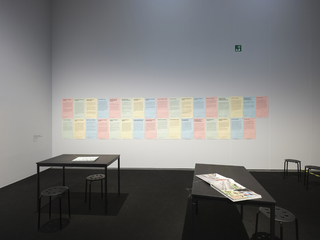
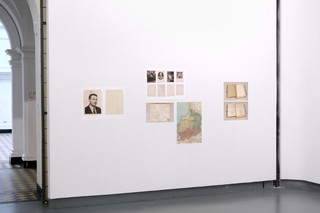
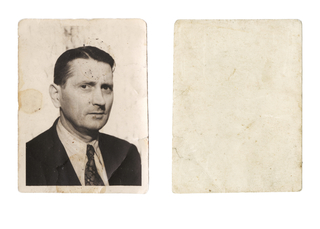
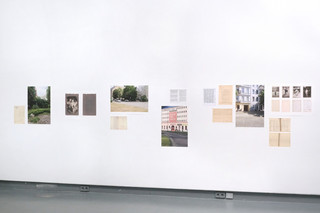
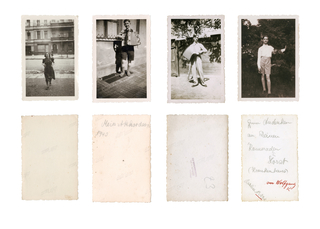
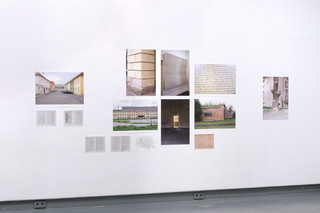
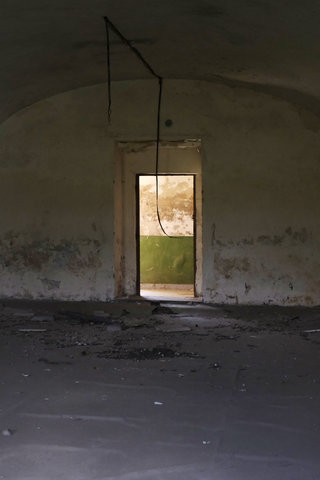
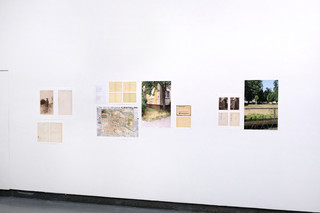
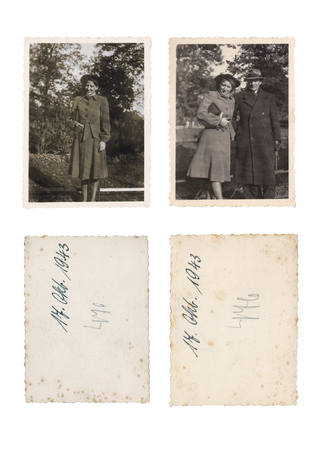
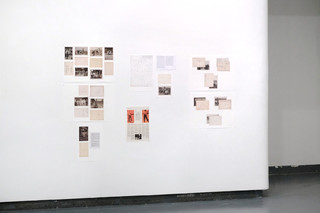
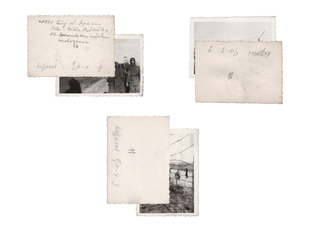
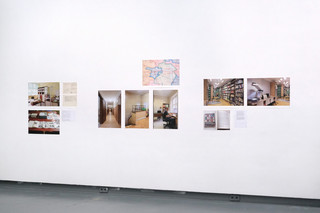
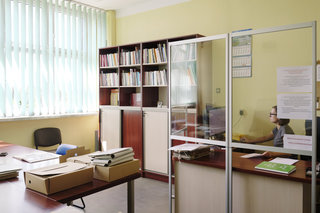
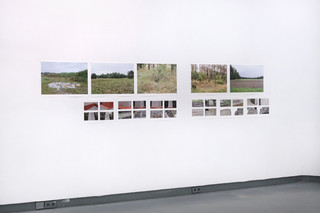
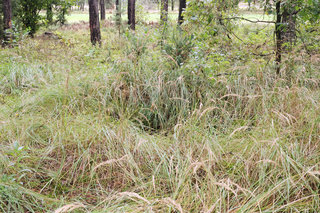
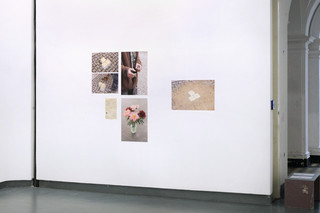
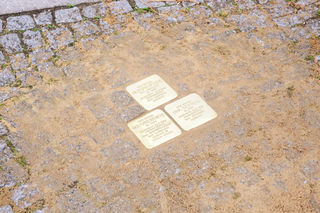
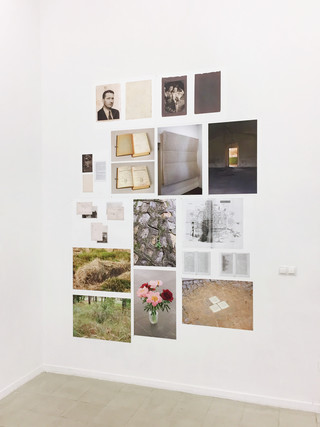
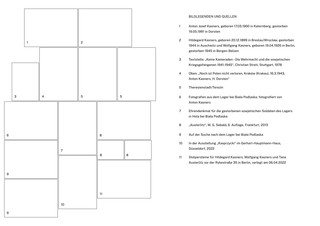
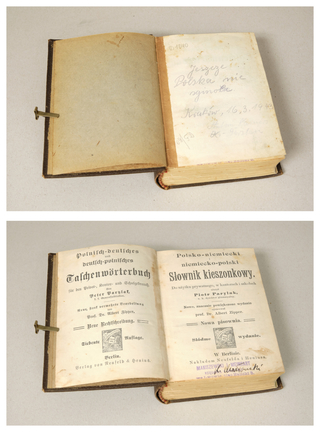
"Kasprzycki" (2022)
Ausgehend von persönlichen Fotos und Dokumenten, die mein Grosssvater hinterlassen hat, habe ich zu seiner Biografie und der seiner ersten, sowie seiner zweiten Ehefrau, meiner Großmutter, recherchiert.
Überliefert sind Fotos, die vor allem ihn und Familienangehörige zeigen, und Dokumente, die auf ihn und Familienangehörige verweisen. Es gibt Material aus der Vorkriegs-, der Kriegs- und der Nachkriegszeit, anhand welcher sich Lebensstationen und Schicksale ablesen und rekonstruieren lassen.
Weiteres von mir gesammeltes und recherchiertes Material – wie Dokumente, Textauszüge, Karten – und eigene Fotografien bringe ich mit dem überlieferten Material in einen Zusammenhang. Dabei bediene ich mich Mitteln der Montage und Sequenzierung. Eine endgültige Form hat die Arbeit nicht, vielmehr begreife ich sie als sich entwickelnd und in ihrer Präsentationsform dynamisch.
Ausstellungstext
Besonderer Dank gilt: Cezary Nowogrodzki, Grzegorz Siemakowicz und Achim Kasners
"Kasprzycki" (2022)
Based on personal photos and documents left by my grandfather, I researched his biography and that of his first wife and his second wife, my grandmother.
Handed Down were photos that mainly show him and family members, and documents that refer to him and family members. There is material from the pre-war, war and post-war periods, on the basis of which life stages and fates can be read and reconstructed.
Other material I have collected and researched – such as documents, excerpts of text, maps – and my own photographs are confronted with the handed down material. In order to do so, I use means of montage and sequencing. The work does not have a final form, rather I see it as developing and dynamic in its form of presentation.
Exhibition text
Special thanks to: Cezary Nowogrodzki, Grzegorz Siemakowicz and Achim Kasners
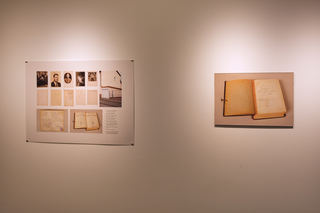
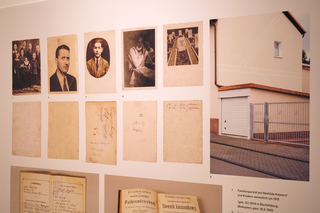
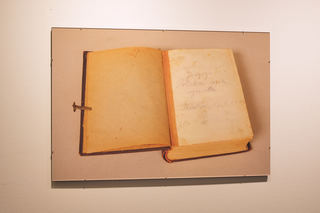
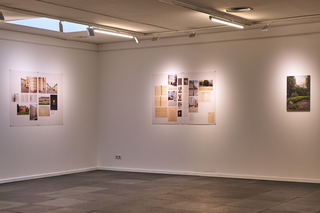
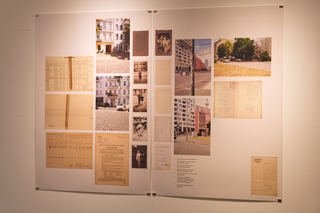
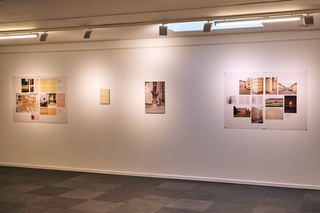
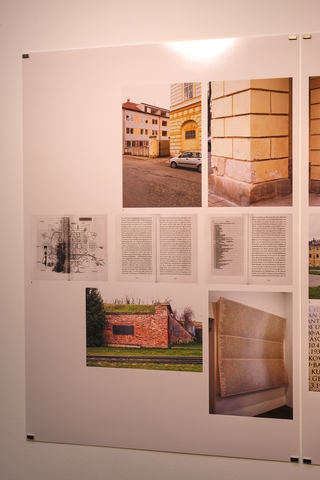
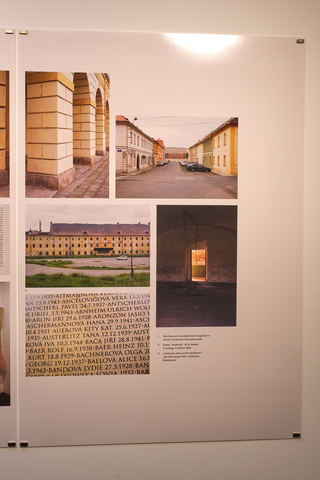
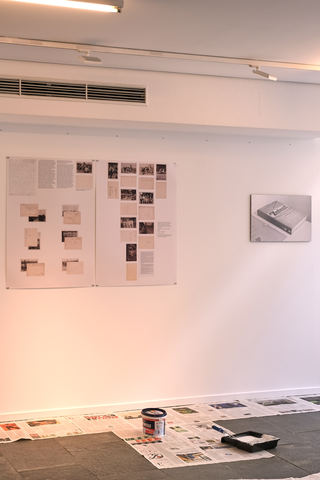
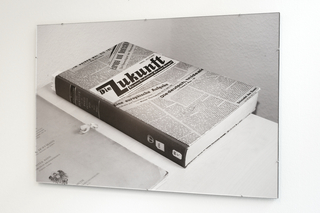
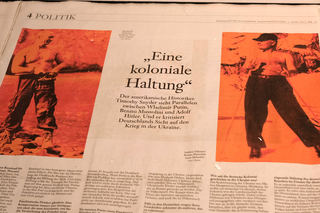
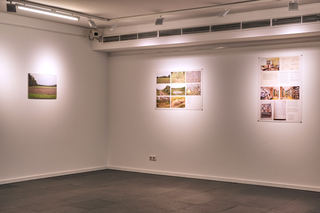
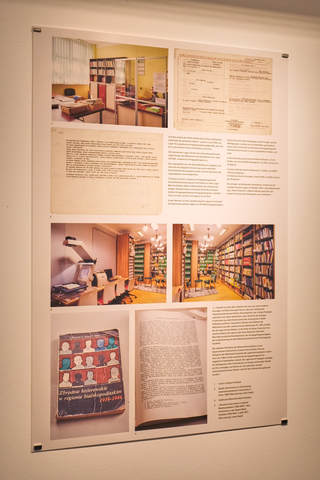
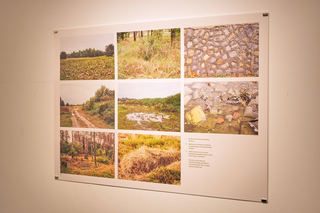
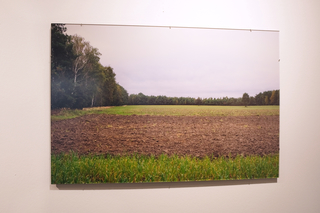
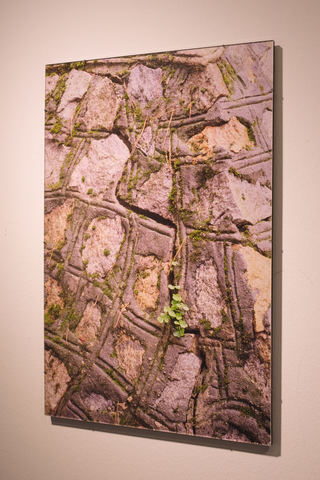
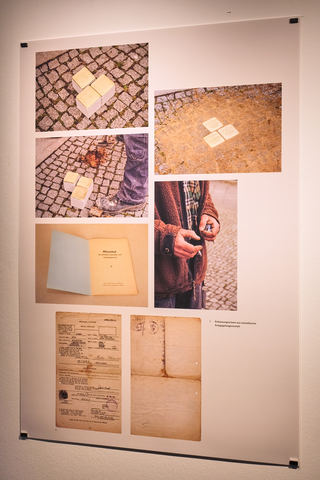
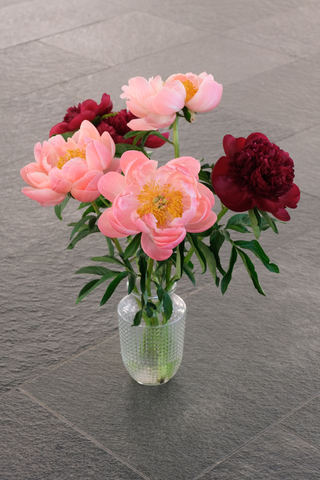
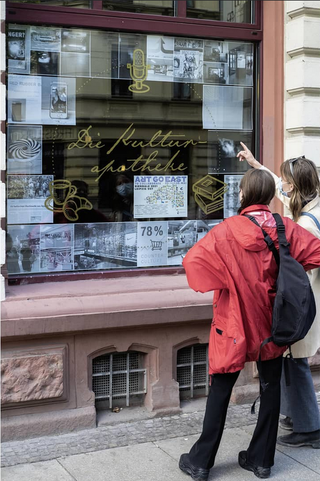
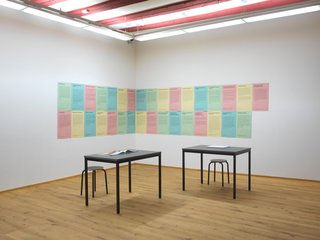

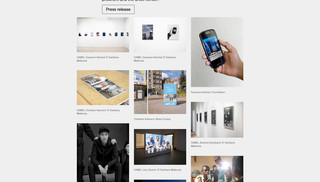
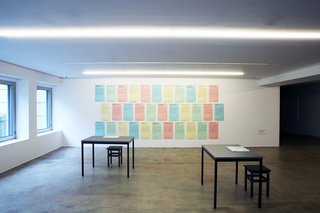
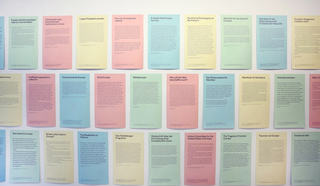
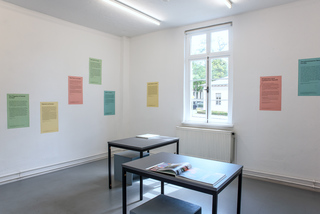
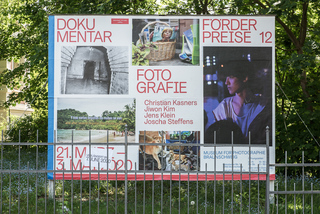
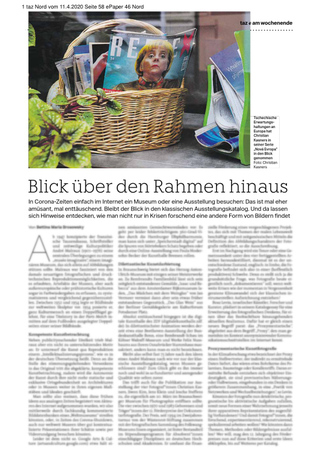
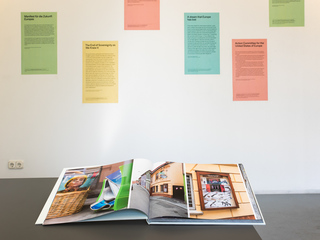
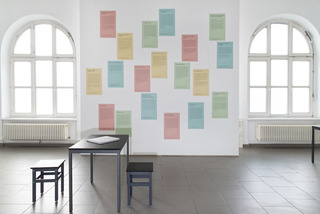
"Nová Europa", 2020
Mit der Arbeit Nová Evropa von Christian Kasners landen wir mitten im gegenwärtigen Alltag Tschechiens. In einer Gesellschaft, die zwischen der Idee eines vereinten Europa und europafeindlichem Rechtspopulismus pendelt. In der Stadtlandschaft und ihrer Möblierung, auf politischen Plakaten und Werbetafeln, in Konsumartikeln und diversen Nutzungsformen des öffentlichen Raums sucht Kasners nach Manifestationen ideologischer und politischer Ideen. Seine Motive erscheinen für sich betrachtet banal. Über die Aneinanderreihung der Fotografien in einem Künstlerbuch verdichten sich die Beobachtungen. Die Bilder laufen über die Seitenränder hinaus, statt vereinzelt mit Rahmen an der Wand oder auf der Buchseite mit viel Weißraum platziert zu sein.
so entsteht ein linearer Bilderfluss, der die Verzahnung der Alltagsbeobachtungen in den Vordergrund rückt. Sichtbar wird, wie historische Hinterlassenschaften von neuen Nutzungsformen überschrieben werden, wie sich in architektonischen ebenso wie politischen Gesten der Zustand einer Gesellschaft einschreibt. In der engen Verflechtung der Beobachtungen stellt sich die Frage, an welchen Indikatoren der schleichende Wandel einer Gesellschaft ablesbar ist. In welchem Verhältnis die politischen Programme zur Alltagsrealität stehen und wie die Gestaltung des öffentlichen Raums die Lebensrealität einer Bevölkerung beeinflusst.
Einen Widerhall finden Kasners Bilder in einer Textarbeit, die die europäische Idee und ihre Entwicklung seit dem 20. Jahrhundert vorstellt. Im Zusammenwirken mit den Zitaten von Politikern, Journalistinnen und Wissenschaftlern wird Kasners Fotoarbeit zu einer visuellen Studie über das Ringen um eine europäische Idee. Andersherum betrachtet, werden die theoretischen Konzepte und Visionen durch die Fotografien einer Wirklichkeitsprüfung unterzogen.
Christin Müller
www.christinmueller.com/texte/in-limbo
"Nová Europa", 2020 (en)
Christian Kasners's work Nová Evropa takes us right to the heart of contemporary everyday life in the Czech Republic. A society that oscillates between the idea of a united Europe and anti-european right-wing populism. In the urban landscape and its furnishings, on political posters and billboards, in consumer articles and various uses of public space, Kasners searches for manifestations of ideological and political ideas. His motifs appear banal when viewed in isolation. Through the juxtaposition of the photographs in an artist's book, the observations are condensed. The images run beyond the margins of the pages, instead of being placed singularly with frames on the wall or on the page of the book with plenty of white space.
This creates a linear flow of images that foregrounds the interconnectedness of everyday observations. Thus he makes apparent how historical legacies are overwritten by new forms of use, how the state of a society is inscribed in architectural as well as political gestures. The close interweaving of the observations raises the question of which indicators can be used to read the gradual transformation of a society. What is the relationship between political programs and everyday reality, and how does the design of public space influence the reality of a population's life?
Kasners's images are echoed in a textual work that introduces the european idea and its development since the 20th century. Interacting with quotes from politicians, journalists, and scholars, Kasners's photographic work becomes a visual study of the struggle for a european idea. Viewed the other way around, the theoretical concepts and visions are subjected to a reality check through the photographs.
Text by Christin Müller, translation with deepl.com
"Nová Europa", 2020 (cz)
Dílo Christiana Kasnerse Nová Evropa nás přivádí doprostřed současné každodennosti v České Republice. Ve společnosti, která osciluje mezi myšlenkou sjednocené evropy a protievropským pravicovým populismem. V městské krajině a jejím vybavení, na politických plakátech a billboardech, ve spotřebním zboží a v různých formách využívání veřejného prostoru hledá Kasners projevy ideologických a politických myšlenek. Při izolovaném pohledu se jeho motivy jeví jako banální. Spojením fotografií do umělecké knihy se pozorování zhušťují.
Obrázky přesahují okraje stránek, místo aby byly umístěny samostatně s rámečky na stěně nebo na stránce knihy s dostatkem bílého místa. Vzniká tak lineární tok obrazů, který staví do popředí propojení každodenních pozorování. Stává se viditelným, jak jsou historická dědictví přepisována novými formami užívání, jak je stav společnosti vepsán do architektonických i politických gest. Úzké propojení těchto pozorování vyvolává otázku, z jakých ukazatelů lze vyčíst plíživou proměnu společnosti. Jaký je vztah mezi politickými programy a každodenní realitou a jak design veřejného prostoru ovlivňuje realitu života obyvatel?
Kasnersovy obrazy se odrážejí v textovém díle, které představuje evropskou myšlenku a její vývoj od 20. století. ve spojení s citáty politiků, novinářů a akademiků se Kasnersova fotografická práce stává vizuální studií boje za evropskou myšlenku. Při jiném pohledu jsou teoretické koncepty a vize podrobeny reálné kontrole prostřednictvím fotografií.
Autorem textu je Christin Müller, překlad s pomocí deepl.com
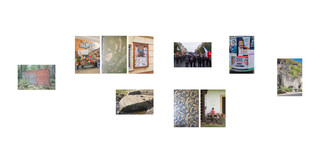
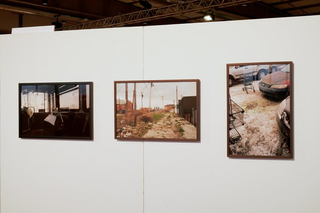
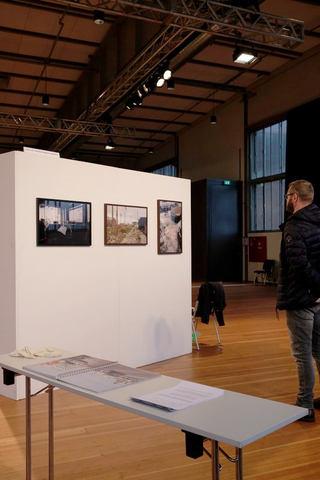
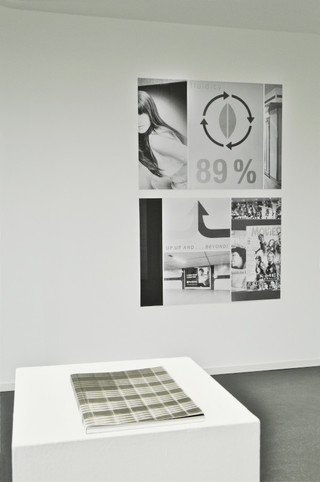
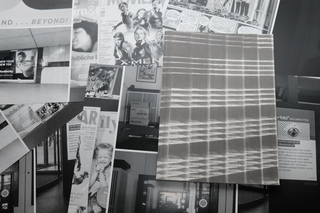
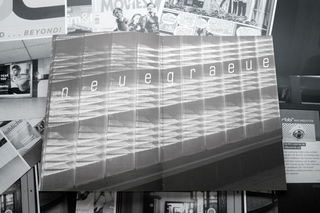
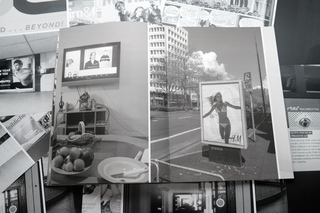
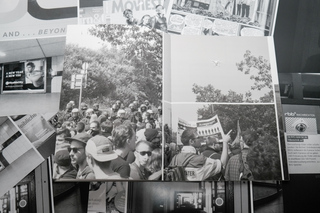
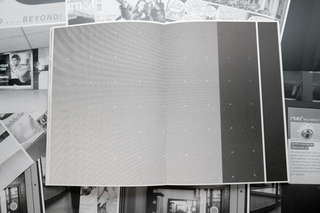
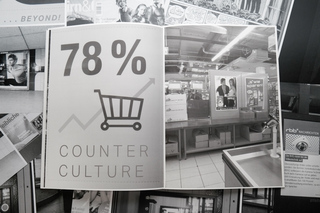
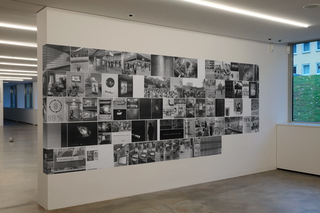
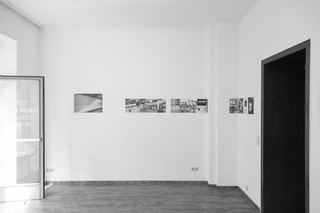
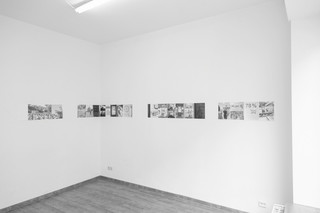
"Neue Graeue", 2017
"Neue Graeue" ist eine fotografische Reflexion über das Verhältnis von Alltagswirklichkeit und politischem unter dem Blickwinkel, dass politisches zu einem entschiedenen Teil als durch Medien übertragen und vom Alltag getrennt wahrgenommen wird.
Diese Trennung, die manchen Diskursen zufolge unüberwindbar scheint, gilt es zu hinterfragen. Mittels dokumentarischer und narrativer Strategien wird versucht, die latenten Verbindungen zwischen den Sphären zu verstehen und sichtbar zu machen. Die Fotografien zeigen Situationen, Motive und Orte, die z. B. in Bezug stehen zum gesellschaftlichen Ruck – hin zu unumgehbarer Kontrolle, nach rechts und "in die Köpfe"; oder etwa zu Phänomenen wie Normalisierung oder Internalisierung (etwa von Rollenbildern).
Der Titel der Arbeit steht in Bezug zum Rückschritt in weniger humane, freie und soziale gesellschaftliche Umstände aber auch zur Aktualität vermeintlich "erledigter" Themen wie Aussenwerbung, Kommodifikation, Nationalismus oder Rassismus. unvermeidbar eröffnet er auch Assoziationen zum Schwarz-Weiß der Fotografien, welches u. a. gewählt wurde, um Bildebenen wie Werbung und den sie umgebenden Raum anzugleichen. Darüber hinaus wurde überwiegend mit einem Smartphone fotografiert. Teilweise aus der Notwendigkeit heraus unbemerkt zu bleiben und teilweise aus inhaltlichen Gründen, um es als „gewöhnliches“ Massenmedium zu hinterfragen und in ein Verhältnis zum Thema der Überwachung, genauer gesagt, der Überwacher und der Überwachten zu setzen.
Die Buchgestaltung betont durch Trennungen und Rhythmus das fragmentarische und das "getaktete" der Fotografie. Über einen bestimmten Teil erinnert sie stark an die eines Comics.
Damit werden inhaltliche Aspekte wie Fiktionalisierung, Virtualisierung oder Eskapismus aufgegriffen. Es ist dies ein Mittel der Montage und Überspitzung, durch welches das Fotografierte teils weiter fiktionalisiert wird, aber teils auch deutlicher als realer Bestandteil unserer Alltagswirklichkeit hervortritt.
Das Festhalten am Medium Fotografie in einer Zeit, in der ihre Anwendbarkeit auf zeitgenössische Themen kontinuierlich in Frage gestellt und anderen Medien zugeschrieben wird, basiert auf der Überzeugung, dass komplexe Themen im Alltag sichtbar sind und durch fotografische Mittel ausgearbeitet werden können. Der Alltag als eine vom politischen, globalen und medialen getrennte Sphäre existiert nicht.
"Neue Graeue", 2017 (en)
"Neue Graeue" is a photographic reflection on the relation of the everyday and the political, taking into account the common perception of the political as being essentially transmitted via media.
This disconnection, which some argue is irreconcilable, has to be scrutinised. By applying documentary and narrative strategies the work aims at visualising connections between the two spheres and making them tangible. The photographs consist of situations, motives and places that are related to the gradual shift to inescapable control, to the right and "into the minds" by means of normalisation, commodification or internalisation (for instance of role models).
The title is associated to this regress to less humane, free and social conditions and to the currency of allegedly settled issues like advertising, commodification, nationalism or racism. It inevitably opens up associations to the use of black and white photography throughout the work which was chosen, e. g. to "flatten" or equalise ads and their spatial surroundings.
Besides the photographs were mostly taken with a smartphone. Partly to remain unnoticed and partially to question its perception as a common mass medium, and its relation to surveillance, or more specifically the relation of the surveillant and the surveilled.
The book‘s layout puts emphasis on the fragmentary and "clocked" nature of photography and partly resembles layout used in graphic novels which, in regard of the photos’ content, alludes to aspects like fictionalisation, virtualisation or escapism. This is a means of montage and exaggeration which further fictionalises the photographed, thus emerging more clearly as part of our everyday reality.
Holding on to photography while its applicability to contemporary issues is repeatedly called into question and accredited to other media, is based on the conviction that highly complex issues can still be identified in the everyday and elaborated through photographic means. The everyday as a sphere that is disconnected from the political, global or mediated does not exist.
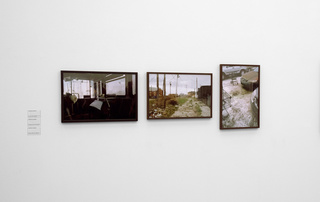
"Heute ist ein grosser Tag für die Stadt und für Städte überall in Amerika. Dies [das Renaissance Center] ist ein monumentales Zeichen, das für sich selbst spricht. Unsere Städte sind in der Tat lebendig und im Auftrieb. Es gibt keine bessere Antwort für all die Zweifler und Schwarzseher." [eig. Übersetzung] -- Coleman A. Young, Bürgermeister Detroits von 1974-1994 während der Eröffnungszeremonie des Renaissance Centers im Jahr 1977.
"Today is a great day for our city and for cities all over America. This [the Renaissance Center] is a monumental statement that speaks for itself. Our cities are indeed alive and on the upsurge. There is no better answer to the doubters and the crepe hangers." -- Coleman A. Young, mayor of Detroit from 1974-1994, during the opening ceremony of the Renaissance Center in 1977.
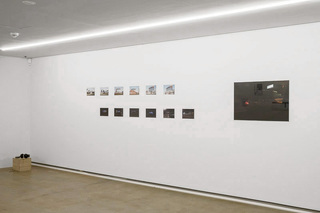
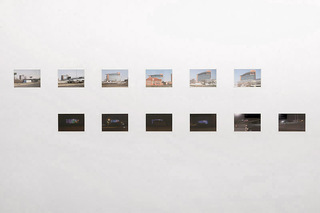
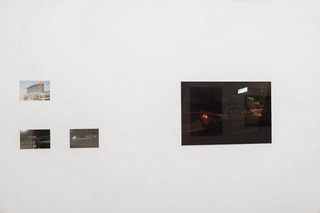
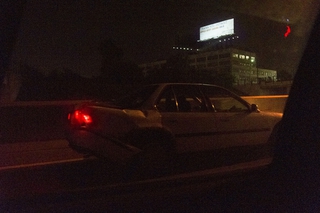
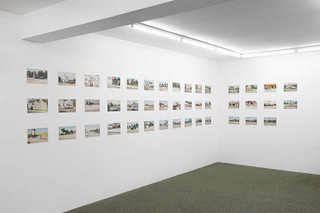
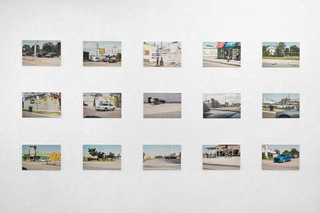
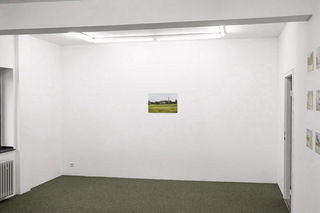
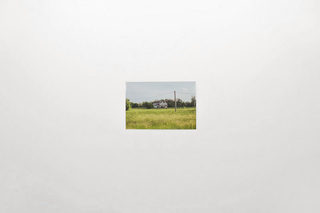
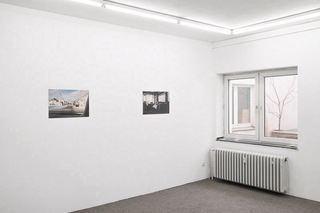
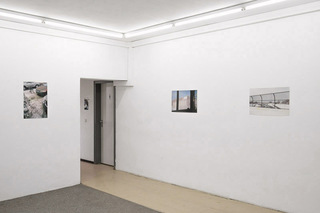
"By Cars", 2016
Die Ausstellung "By Cars" bestand aus Fotografien, die 2015 in Detroit entstanden sind. Fotografiert wurde sequentiell als Beifahrer in einem Auto auf der Gratiot Avenue, einer der fünf großen Avenues in Detroit. Sechs weitere Einzelbilder bildeten eine Einleitung vom Eingangsbereich in den Ausstellungsraum und zeigen Bilder einer durch das automobil geformten Stadt.
Die Haupthängung ist in einem dreizeiligen Block von insgesamt 44 Fotografien angeordnet, wobei die unterste rechte Ecke der Hängung frei bleibt. Die Bilder zeigen beiläufige Szenen entlang der Straße, die in eine Erzählung ohne Anfang und Ende zusammenfliessen.
"By Cars", 2016 (en)
"By Cars" consists of photos that I took in Detroit in 2015. The photos were taken in sequence while co-driving in a car on another of Detroit's big avenues, Gratiot Avenue. Within the exhibition six additional pictures formed an introduction from the entrance of the exhibition space to the main gallery room and show images of a city essentially shaped by the automobile.
The main body of work is hung in a three-lined block of 44 photographs leaving the bottom right corner of the hanging vacant. The images show casual scenes along the road that coalesce into a narrative without beginning nor end.
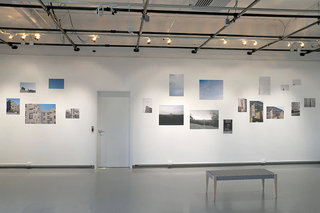
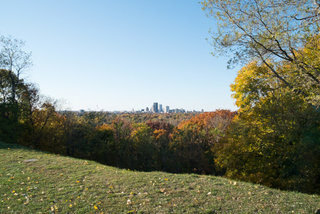
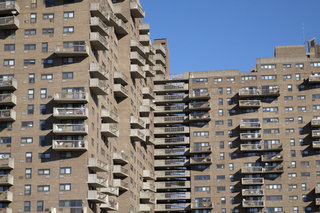
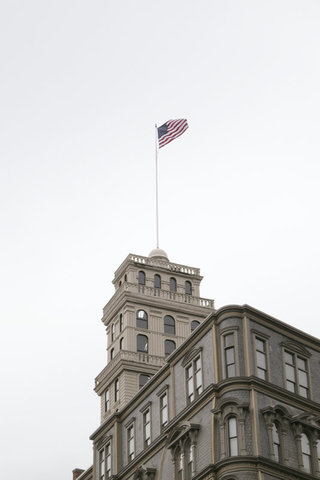
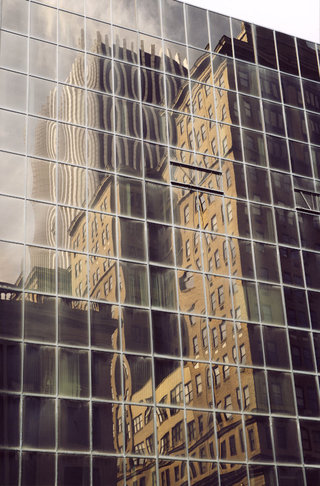
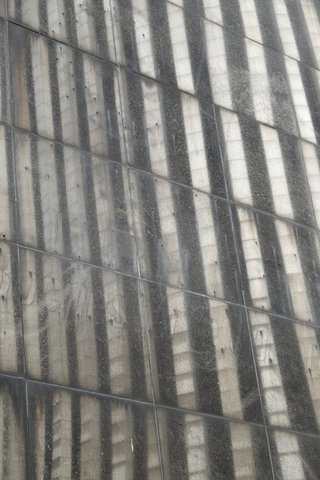
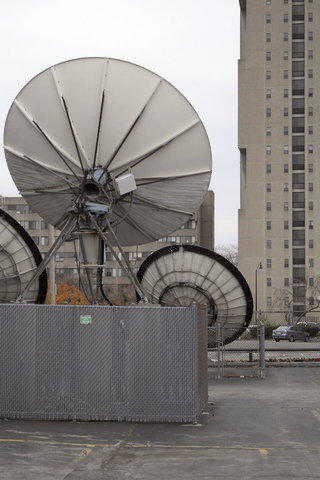
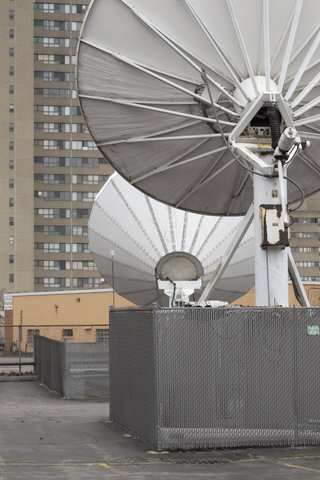
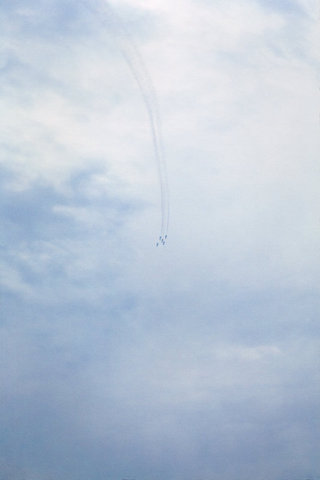
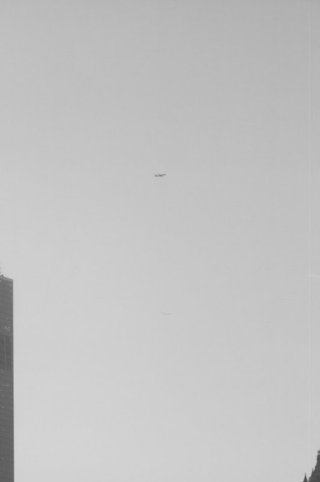
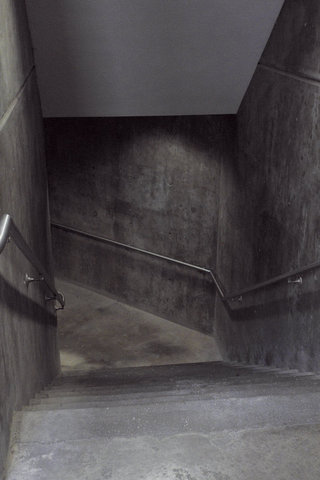
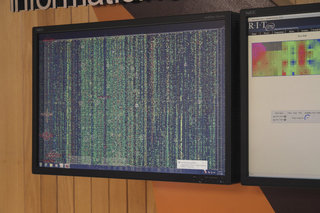
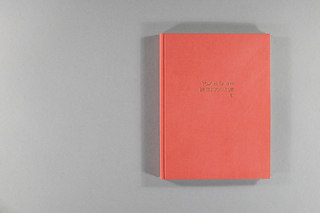
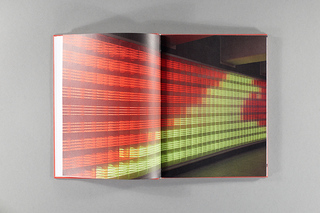
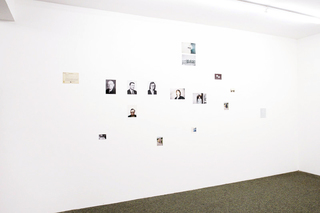
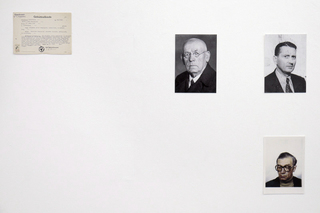
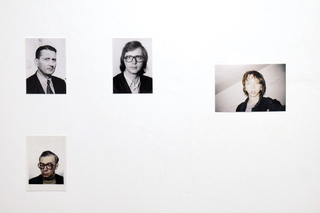
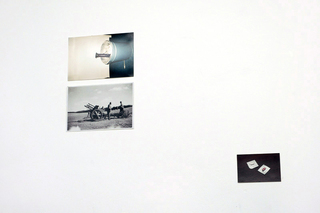
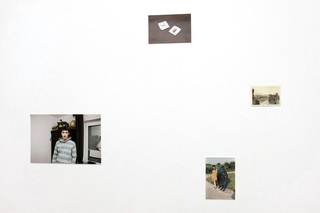
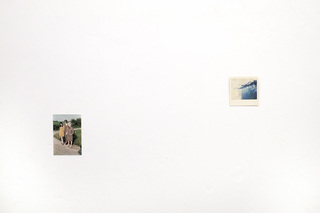
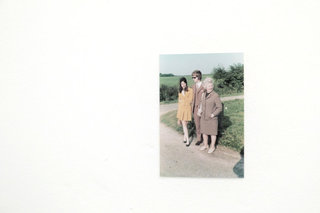
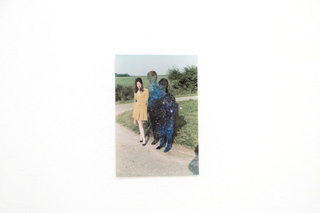
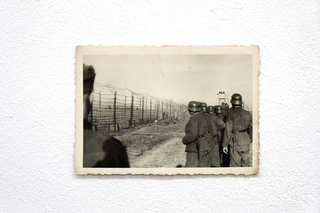
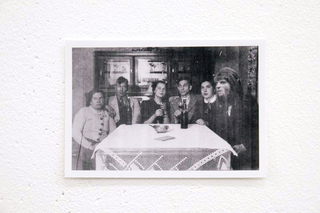
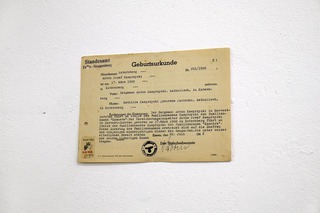
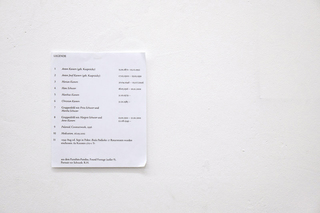
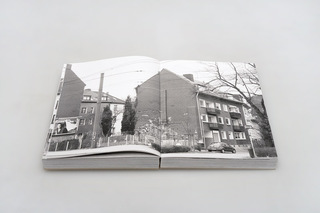
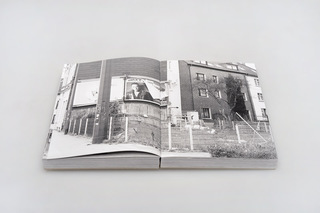
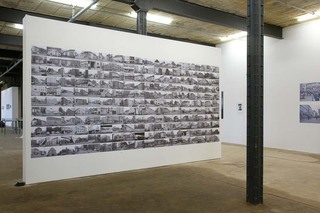
JavaScript is turned off.
Please enable JavaScript to view this site properly.